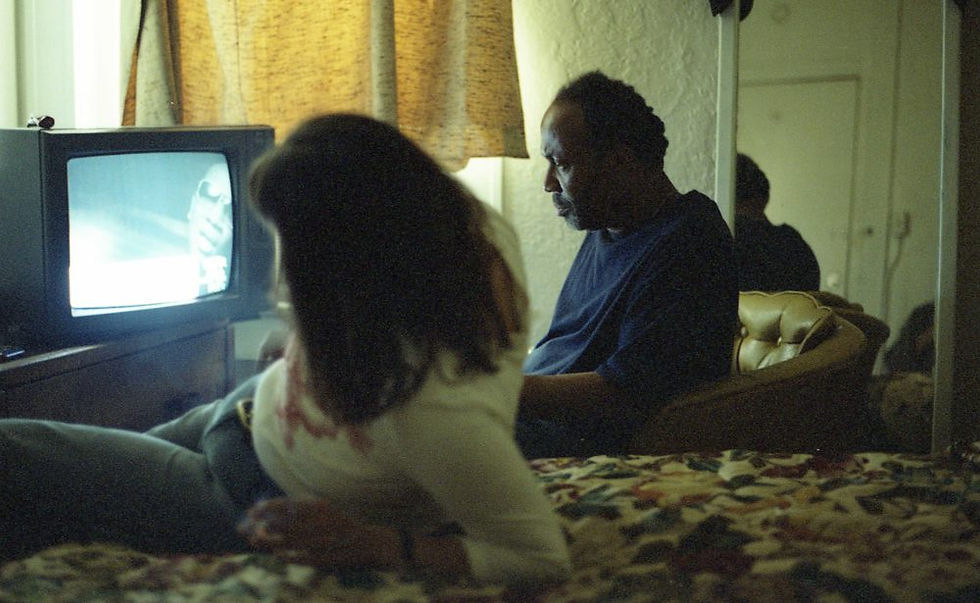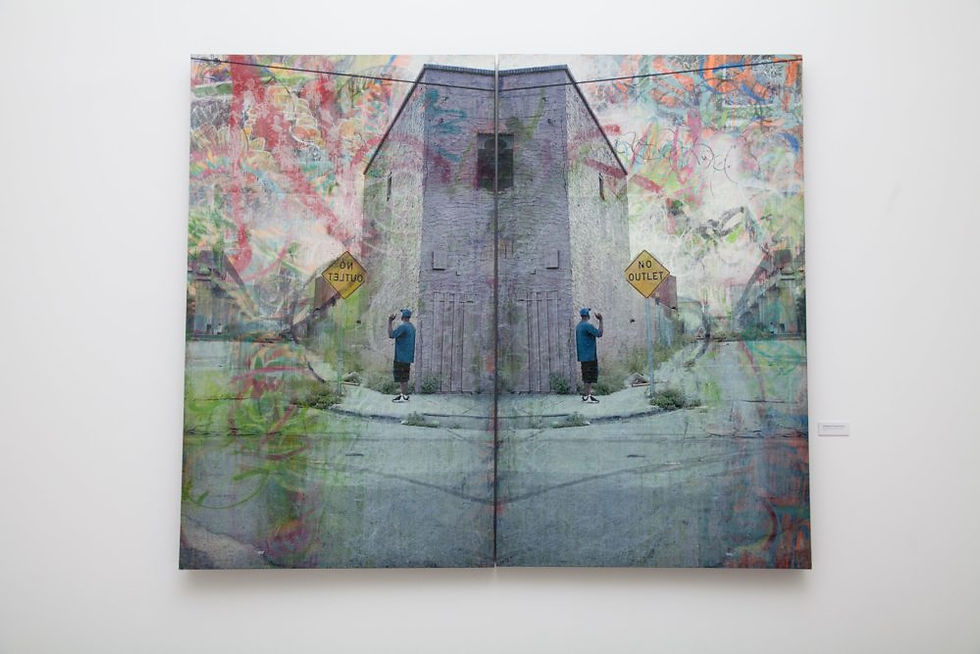Pablo Power’s art looks at an urban wilderness
- Dec 31, 2015
- 4 min read
Updated: Nov 28, 2024
Stories of marginalized worlds that surround us

Pablo Power’s multi-media art looks at an urban wilderness of unseen and forgotten worlds to soften fears of the unknown.
In 1988, I began spending summers with my father in Miami, until I moved there to attend high school a few years later. I was in the throes of a youthful obsession with the mysterious apparition of graffiti writing, and landing there brought it into focus. Miami was in the midst of a heyday of writing, so it didn’t take long for me to garner an understanding of who the mystery people were, eventually even becoming one, myself.
In that era, the urban center of Miami was a boundless urban wilderness, with most of the city’s population living in the suburbs. Following the graffiti subculture led me to labyrinthine railroad tracks and alleyways, crumbling neighborhoods, depopulated trailer parks, and homeless’ shanty towns. These were playgrounds of the writers, where we could be left alone to create freely, with less concern for law enforcement or property owners catching up to us. But there were other denizens of the dark to contend with in those areas: a population that also seeks anonymity in the margins of society, but as a place to be freely consumed by mental illness, addiction, and criminal activity. Through encounters with those inhabitants, I was able to forge a connection between divergent worlds and found the importance of looking beyond what’s familiar and approachable.
The first body of artwork that I was passionate about came out of those years of writing and painting murals in public, to introduce something colorful, crafted, and considerate into locations that had otherwise been forgotten, overlooked, or avoided. As I explored my own artistic vision through murals and public installations, I pushed these interactions deeper into Miami’s urban wilderness, long before there was a single gallery and barely a few artists in Wynwood. This led directly into photographing and documenting communities of people who inhabit those marginal areas, as an exploration of how disparate communities can coexist and relate to one another. Eventually, I sought to focus more concisely on the places and people who inspired those early revelations, through multimedia documentary. In my current work, I layer my own photo and video images over painting and representations of text, to depict stories of unknown worlds that surround us. My work forms a bridge across divergent communities; its process raises awareness of unseen and forgotten worlds, softening our collective fear of the unknown.
Image: “Crack Another Forty/ A Birthday On Christie” 2013. A mixed media work capturing a moment of early morning celebration with The Inkheads
PORTFOLIO

The Brooklyn Dead Tracks at Nostrand Avenue, Brooklyn, in 1997. A decommissioned, nearly inactive stretch of railroad tracks.

“Always On The Rise On 146” A mixed media work paying tribute to Sharif Jones, a friend and collaborator in the 1990s.

Genie walks home, crossing an alley behind Power Studios Miami, after a night of sex work in 2003. She was from Northern Florida and had no permanent residence in Miami. She was a drifter, addict, and sex worker to support her drug habit.

OG and Linda get high and watch TV all day at the City Heart Motel in Reno, 2007. He was from Oakland, she from the Midwest, not married, not employed, survived with government assistance

“Success And Reformation” 2015. A mixed media work depicting a Miami freight yard before it was developed into a luxury high rise complex.

145th Street, NYC, A night at Willie’s Burger’s in 1998

A morning walk through Overtown

“Ouroboros As Metromover” A mixed media work inspired by Overtown, a once vibrant Miami neighborhood isolated by many years of institutional neglect and disregard by surrounding communities, now slowly returning to its former place as a cultural destination

An evening walk through Overtown

“Pattern In Union” 2017, a mixed media representation of the compass, a metaphor for adapting ancient standards to find future solutions

In Reno public housing, Honey, a pregnant sex worker, kicks me out for only wanting to take pictures and talk

Dirk, Rowdy, and Jim divide their money so that all 3 men have an equal amount to spend on the day’s drinking in Reno

“Compass Points/ Forming Patterns #F” Abstractions of the letters N-S-E-W, the points of a compass, a reoccurring motif in my work

Batman is highly intoxicated, drops his gin bottle, and gets arrested in Reno. He was extremely mentally ill, delusional, hallucinatory, and intoxicated. During the time I spent with him he was asking me a lot of questions and had a clear fixation on the details of my family and how much love I’d experienced in my life. He was deeply disturbed on many levels and was one of the few interactions that I’ve ever had in my life that truly made me fear for my personal safety.

Reno, 4th Street at sunset

Diana, a Reno sex worker, makes contact with a client at dawn

“Compass Points/ Forming Patterns, Full Scale #3” A mural created as an event to generate dialog between disparate populations in the rapidly changing Colonia Guadalupe, San Miguel De Allende, Mexico.
PABLO POWER

Pablo Power was born in a log cabin in rural Maryland, but spent his formative years in the seamy, creative crucible of Miami. That early inspiration propelled him to New York City, to study at Parsons School of Design and School of Visual Arts.
With little more than a camera, Power embeds himself in marginalized communities across America, living in streets and motels with his subject matter as he documents their time together. In the studio, the photographs are layered with drawn and painted elements, which allude to the texts and textures that have been at the core of his work from the beginning. Power lives in Brooklyn and works in a combination of media to conflate community.